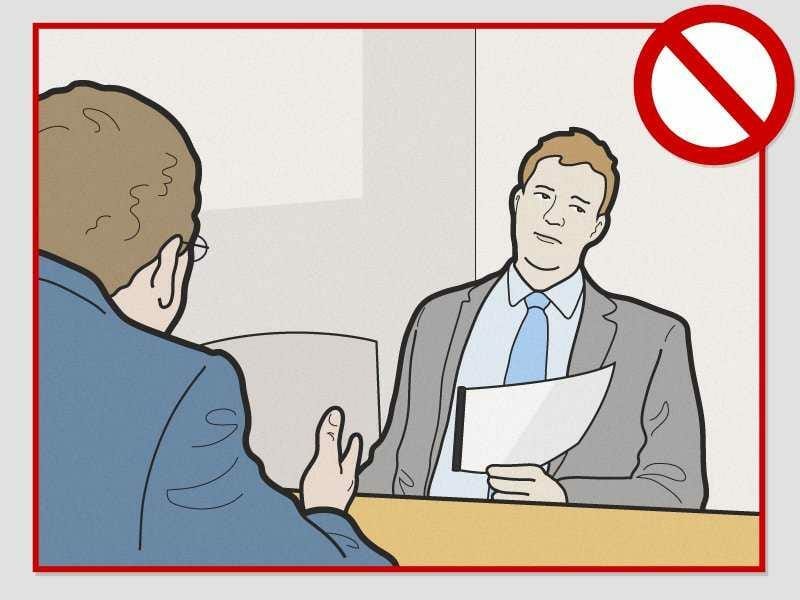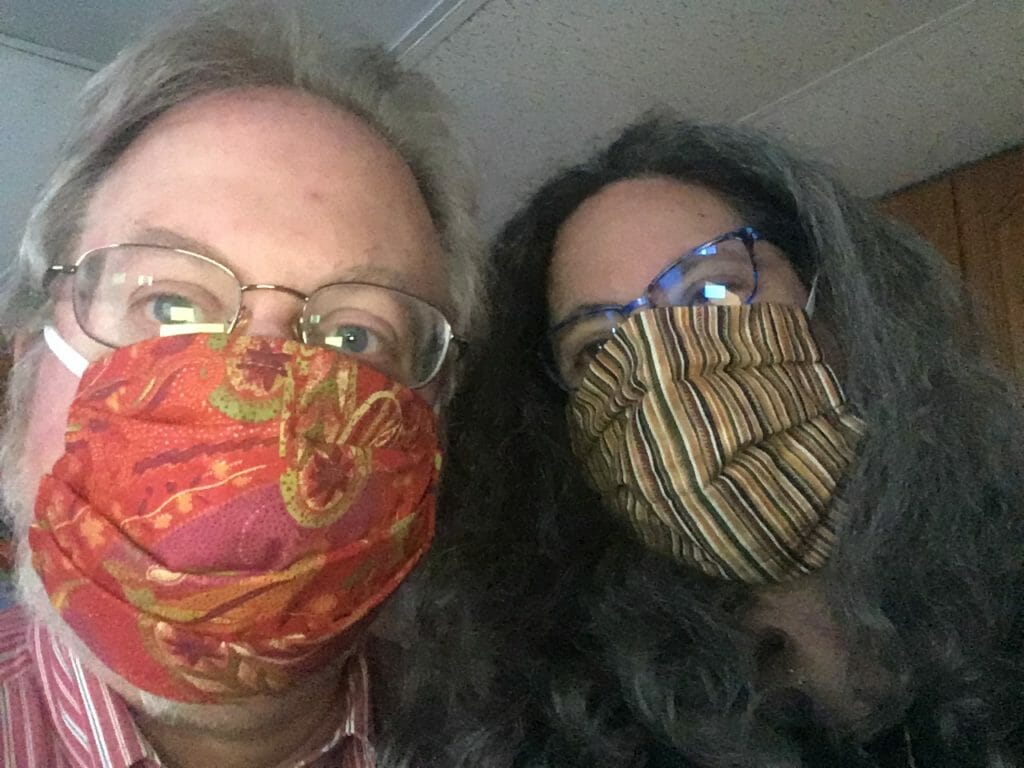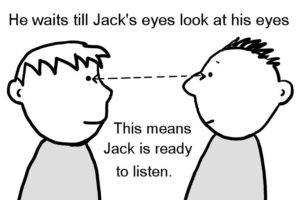Body Language and Covid-19

Eye contact
 Right now, we all need to pay more conscious attention to eye contact. We are in a time when we are communicating through video. The two-dimensional images, plus the lags due to bandwidth, change things. Then, in public, we are speaking through masks. How to stay connected? Eyes communicate. They are a big part of body language.
Right now, we all need to pay more conscious attention to eye contact. We are in a time when we are communicating through video. The two-dimensional images, plus the lags due to bandwidth, change things. Then, in public, we are speaking through masks. How to stay connected? Eyes communicate. They are a big part of body language.
Lack of eye contact communicates disregard for the other person; prolonged contact can be read as a come on. (These are generalizations, based on white American norms, and your mileage may vary.) Every adult figures out their own eye contact style, usually without a conscious effort.
Eye contact in a business setting
B.C. (before Covid-19), I knew where I stood. As a woman, I am aware of the gaze of men and women who might be checking me out. To me, that gaze has a feel, as well as a look. However, not everyone is tuned into the weight of someone else’s gaze.
As a woman in business, I have to pay attention to status messages that run along gender, class, and race lines. They can be misread and lead to problems. I tend to make brief eye contact when I begin a conversation, then avert my eyes. I come back every couple of sentences, if I am talking in paragraphs. I come back to eye contact at the beginning of each utterance, when I am answering in short bursts.
The norms for eye contact are affected by gender. If I am too bold — give too much eye contact– some people will read me as provocative (sexy or arrogant) rather than friendly. It is something I had to learn, as I came into business as an adult. There are differences across cultures. That’s something I had to consciously study, too.
He’s not that into you
I can distinguish a gaze that is meant to communicate attraction from one that communicates interest in what I am saying or doing. At least, I think I know the difference.
On the flip side, when someone is not looking at me when I am speaking, I think I can read them, too. Generally, I know when someone is talking down to me or disregarding me versus that someone being shy to make eye contact with me, and other people in the room.
When I greet someone on the street, I make eye contact, then quickly look down. I intend this to be friendly and not provocative. Men, it seems, say “hi” and nod to one another. I think I nod some of the time, too.

Covid-19 has disrupted all our nonverbal signals. On Zoom, I would not have a clue if someone is giving me bedroom eyes or disregarding me. Behind a mask, I’m not so confident I can read people, either.
So, what do we do, in the age of Covid-19, to communicate interest on Zoom or other video, and on the street?
Video eye contact
This is counter-intuitive: looking at the person who is speaking on the video chat is not the right thing to do. If you are looking at the speaker, in a gallery view, you will appear to be looking away. You will seem uninterested or disrespectful.
Instead, gaze back at the camera light every few sentences. When you are talking, look at the camera light. The eyes of the other people are not the way to make eye contact. The camera equals eye contact.
When outside
I had a boyfriend in high school who was rather nearsighted. He was also vain enough to not wear his glasses. Because I hung on his every word (for a time), I remember him telling me that he waves to everyone who waves at him, since he can’t see their faces and doesn’t want to insult anyone. Doing that, I think, enhanced his reputation as a friendly, approachable guy.
My husband says hello, with a little nod, to people he sees on the street, whether he knows them or not. When my husband said “hi” to a stranger while walking with a five or six-year-old boy of our acquaintance, the child found it peculiar because he was told not to talk to strangers. This led to a serious conversation — on a five or six-year-old level — about managing safety while maintaining a friendly community.
For children and women, being friendly can be dangerous. When I say “hi” to a stranger, I make a point of quick eye contact and a nod. If the stranger is a guy, my eyes then go down, almost immediately. I don’t want to appear to be too friendly.
The waving and the nodding/hello saying are even more important now. With masks, it is harder to recognize causal acquaintances. So, like my nearsighted old flame, just wave back! Like my husband, say hello to strangers. I guess I am drawn to friendly guys and want to be a friendly person.
Why be friendly?
Being mildly friendly to everyone is the antidote to what people have been reporting in retail environments. People are tense, and somewhat hostile, in supermarkets and other stores. We are seeing other people as threats. A bit more “Hello” or even a “Hello, stay well!” could go a long way in getting through this with our sense of community intact.
There is some awkwardness on the street, too. We are not used to keeping a six-foot distance between one another. We don’t have rules for who will change their travel flow to increase the space between us. A little eye contact will help ease this tension.
How to share the spaces
Consider walking in a flow similar to driving traffic. Traveling on the right side of the sidewalk, passing on the left. Sometimes this means you’ll need to stop and yield to another person walking nearby, so that they can remain six feet away. Sometimes, that person will come within your six-foot limit; look for their good intention. Did they speed up, to limit the intrusion? Did they nod an apology?
I am finding that I enjoy the chats that I have with neighbors when I am out. Two-dimensional people on Zoom are just not the same! For a while, talking across a six-foot gulf is well worth it.
I have had safe and pleasant walks with people from other households by walking on side streets with one household on the sidewalk and the other on the street, with parked cars between us. This works well in the Cambridge metro area, where there are many low-traffic residential streets. Walking against traffic on a one-way is particularly easy to navigate safely.
Goal: I would like everyone to get through this safely: job one. Secondly, let’s get through this without hating everyone else as a vector of disease.
